The Bard's Tale Trilogy (PC) Review
By Gabriel Jones  21.07.2019
21.07.2019

Skara Brae is trapped in the icy grips of Mangar! Monsters roam the streets, the gates are sealed shut by a never-ending blizzard, and the militia have all but disappeared. Is there anyone out there that can put an end to this nightmare? Well, this wouldn't be much of a RPG if there wasn't. This tale marks the first of three in The Bard's Tale Trilogy. Remastered for a new generation of dungeon explorers, this is one set you won't want to miss out on.
The Bard's Tale: Tales of the Unknown
Much like any other dungeon-crawler, the heroes start off as pitiful losers. Dressed in rags and reeking of cheap ale, they pool their life savings just to buy a few swords. Upon hitting the streets of Skara Brae, they quickly discover that they should've never left the tavern. Within seconds, a single encounter with a few lowly fiends has almost completely broken them. After dragging their fallen friends to the temple to be revived, they divvy up their earnings from the ordeal. Sure enough, they're still flat broke and feeling not the least bit stronger. Would you believe that in less than 15 hours, these nobodies would go on to conquer the depths of the city, climb Mangar's dread tower, and then smash his evil schemes like a ripe tomato? It's hard to imagine, but definitely not impossible.
For this critic, the appeal of the genre has always been building people up from nothing. Take the Mage for example. At first, this poor sod's fireball couldn't singe an orc's nose hairs. Given enough time, he'll become a powerful Wizard, able to summon demons from another dimension. Of course, meek spell-casters need big strong warriors to protect them. Picture a Paladin decked out in the mightiest armour. An entire legion of berserkers can't even lay a scratch on her. Then there's the high-level Monk, who can slay a dragon with one punch. However, becoming strong enough to topple the Gods themselves doesn't mean much, if you can't find your way out of a maze.
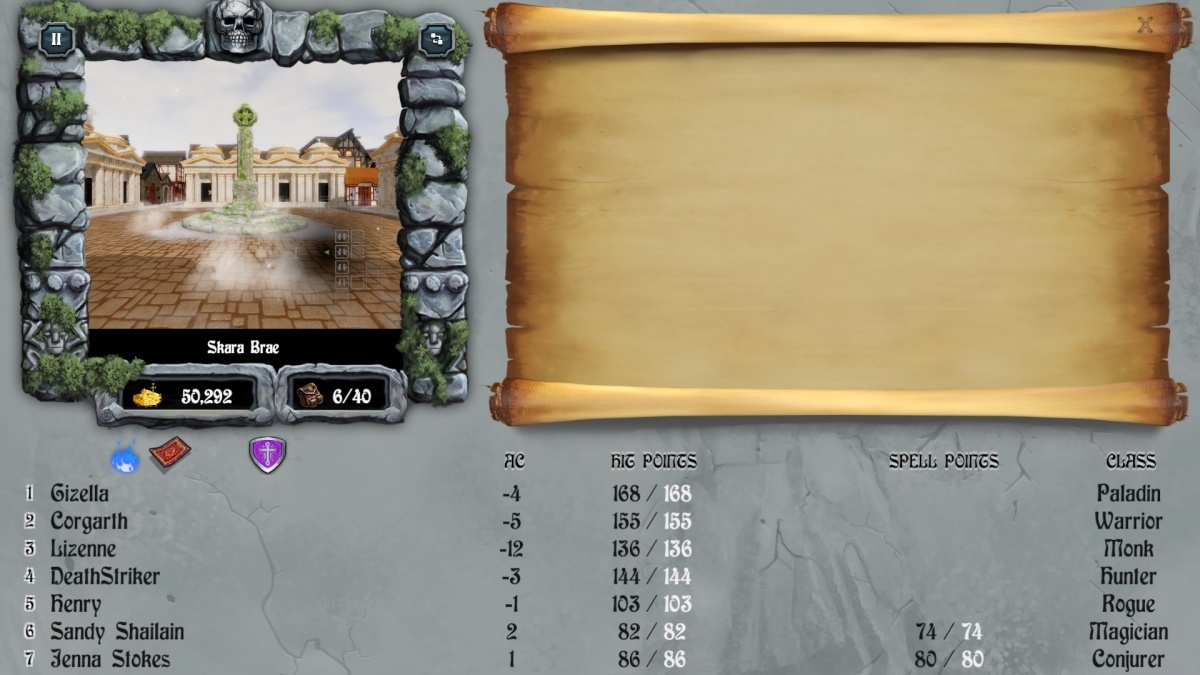
The Bard's Tale is very traditional when it comes to dungeons. Hidden in the deepest, darkest bowels of these monster-filled lairs is some artefact of great importance. Everything else is periphery, and rarely is there any value in exploring every last tile. That said, clues are sometimes scrawled on the walls or whispered by shadows. Many riddles can only be solved if the adventurers know which words to say. Oh, and good luck if you don't have internet access or a stack of graph paper. The original version of this game doesn't have auto-mapping of any sort.
Further confounding exploratory efforts are the countless traps and obstacles. While a simple levitation spell can avoid most tripwires and pressure plates, caution is the only guarantee. If the party is moving too fast, they could land on a teleporter, be thrown through a spinner, or get wiped out by a blast of poison. Eventually, some players will tire of spending their dungeon treks getting hopelessly lost, and then they'll seek out something a little more forgiving. Still, it helps to learn the teleportation spell Apport Arcane. Outside of a few exceptions, this spell allows the caster to move to any tile in the dungeon. It's great for resuming progress, and even better for escaping a hopeless situation.
In order to get the most out of this quest, it's prudent to recruit a Bard. While exploring, the Bard's melodies can confer a host of benefits, including hit-point regeneration, or reduced damage from enemies. During battle their tunes take on different effects, and will help keep the party thriving. More often than not however, the difference-maker is going to be all of the magical instruments that are found in dungeons. With the aptly-named Fire Horn, Bards can breathe flames onto a group of monsters. There doesn't seem to be much in the way of elemental resistances either. Fire giants will burn just as easily as Ice giants.
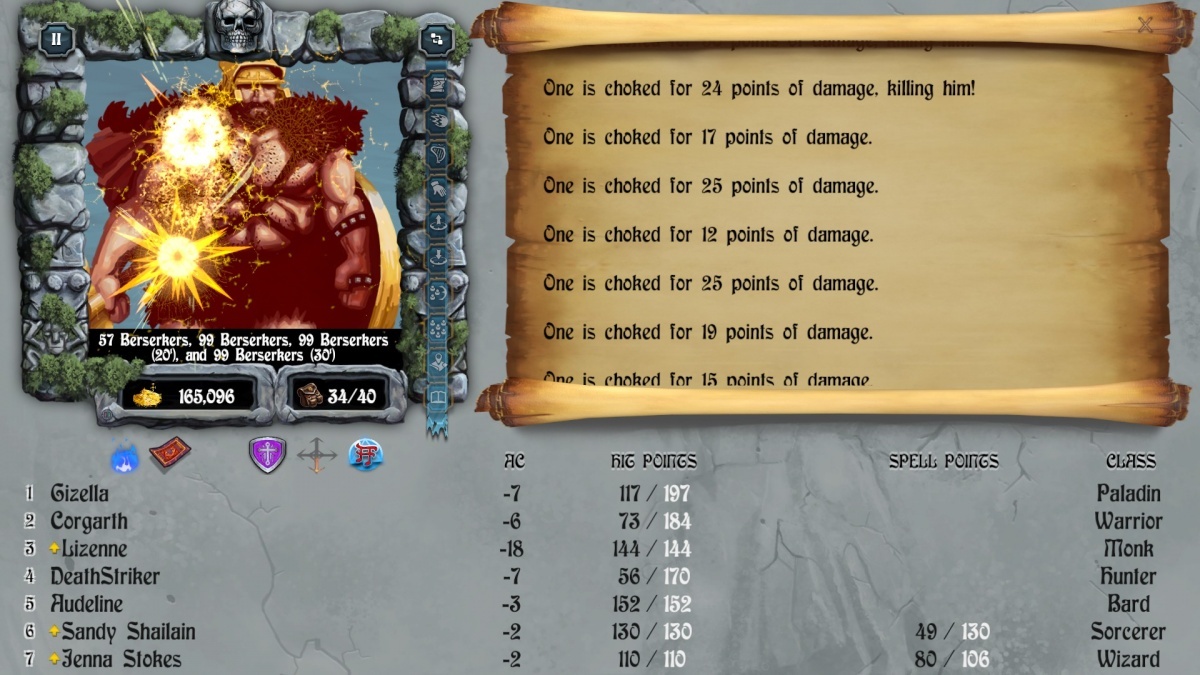
In the pantheon of dungeon-crawler classics, this one earns its place by offering just the right balance between exploring and fighting. Battles, though they can potentially involve hundreds of monsters, move lightning-fast thanks to a good interface, and a bevy of powerful spells. Dungeons feature the requisite mix of puzzles and traps, ensuring that they won't be easily completed. All in all, it's a required play for genre enthusiasts. Although, they might want to take advantage of the modern conveniences available in The Bard's Tale Trilogy.
The Bard's Tale 2: The Destiny Knight
Though Skara Brae has been saved, a new threat has emerged. The Destiny Wand, the very same wand that protected the realm of Caith for over seven hundred years, has been shattered into seven pieces by Lagoth Zanta. His armies have already laid waste to all who dared to resist. In order to recover the wand's remains, a party of heroes will have to explore the most diabolical dungeons imaginable. Only by surviving the death snares can they hope to unleash the power of The Destiny Knight, and stop Lagoth once and for all.
At first glance, The Bard's Tale 2 perfectly encapsulates the "bigger and better" adage sequels often adhere to. Over seven massive dungeons are waiting to be explored, and they're filled with all sorts of exciting dangers. The battle system has seen a remarkable update. Enemy groups can now attack from range. Either the heroes advance forward, slaying anything that gets in their way, or they make use of bows and spells to get the job done. Summoners are much more prevalent, and will call a seemingly endless array of fiends to their side.
To counter these odds, players can opt to promote their spellcasters to the almighty Archmage class. Remember the recently-slain Mangar? He was an Archmage. Anyway, these masters of the mystical arts can operate mallets to crush entire armies, revive fallen friends with a few words, and call for the Kringle Brothers' assistance. With such powerful techniques on hand, a single Archmage could very well crush Lagoth's plans. Unfortunately, without decent armour or a monk's natural defences, they can still get squished as easily as a grape.
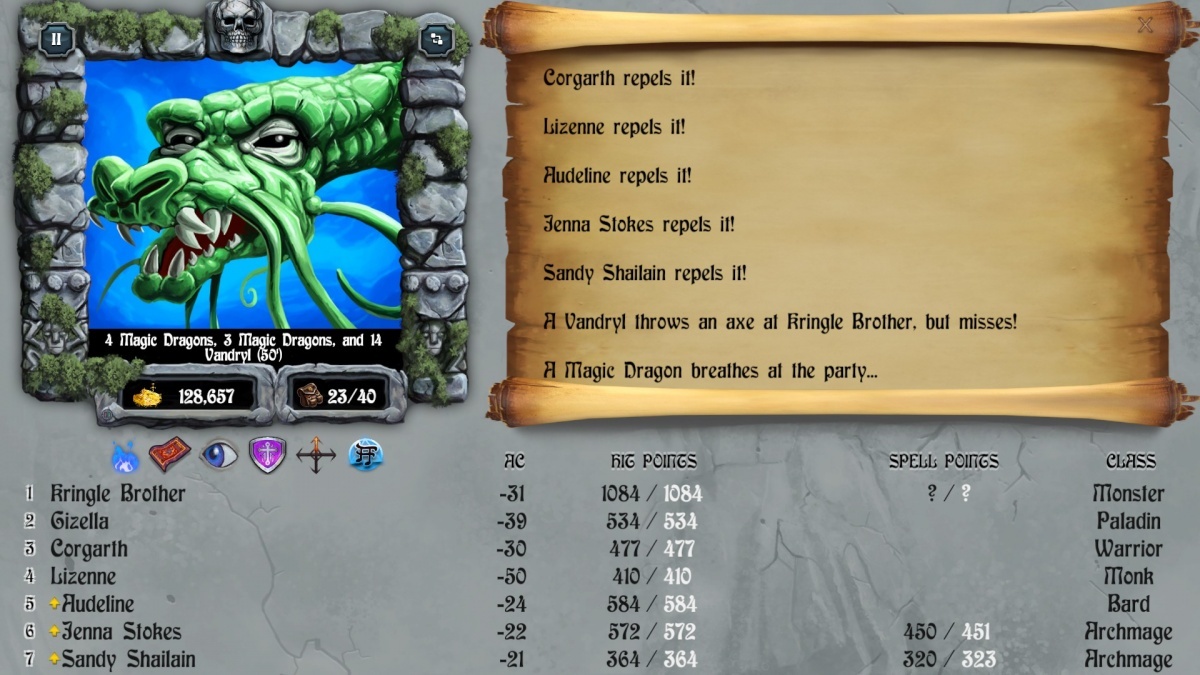
Even in pieces, the Destiny Wand is one of the most powerful tools in videogame history. Unlike most other magical artefacts, these segments hold an unlimited number of charges, and are capable of immense power. If someone manages to survive the crypts and its death snare, they'll discover that the sixth segment casts the ultimate healing spell, at no cost whatsoever. Once this trinket is acquired, it would take a significant effort on the player's part to lose a battle.
In an effort to keep battles from becoming mind-numbingly easy, the game makes it so encounters usually involve dozens upon dozens of monsters. We're talking crowds of dragons, wizards, and warriors, all attacking at once. Seriously, it's ridiculous that fifteen dragons can fit into these tiny hallways, yet there's apparently room enough for them and all their buddies. However, if the heroes are adequately equipped and sufficiently levelled, there's nothing these fiends can do to stop them. They're just flies waiting to be swatted, and it's a pathetic sight to witness.
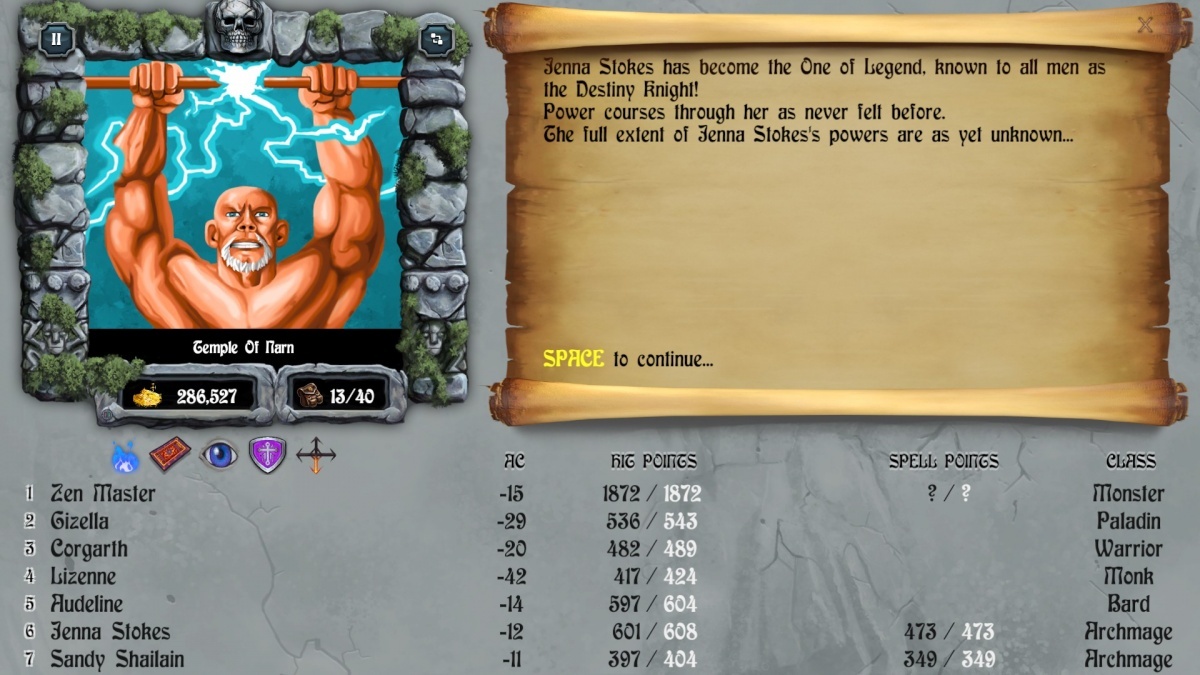
Rather than allow everyone to sleep-walk through this adventure, the developers focused on designing labyrinths that are as complex as they are tedious. Not a single tile is left unused, even if all it provides is another opportunity for a forced encounter. It isn't unusual to see large portions of the dungeons being used to house constant battles. Imagine stumbling through a series of rooms, with nothing to do but get into fights. Running away is easy, and the baddies can't put up a fight anyway, but it's still really obnoxious. Also, one-way doors, spinners, and light-eliminating "darkness" titles are everywhere. All told, they're just more headaches.
Puzzles, particularly the aforementioned death snares, are also ridiculously overwrought. In more than one instance, players must satisfy a series of repetitive and arbitrary conditions, seemingly without any reason. The most convoluted scenario is towards the end. In order to reach the final segment of the wand, the heroes must solve a maze of doors…seven times. Clues to the right paths are hidden in both the manual and the final dungeon. It's just an entirely unnecessary process, with the only reward being that the game can finally be shelved.
All in all, this is a disappointing sequel. It seems that the developers were aware that seasoned adventures would find the battles to be too easy, so they focused their efforts on the dungeons. The problem here is that they went too far. Each locale is an endless series of nuisances. Getting lost is one thing, but having progress stymied by nonsensical riddles is just too much. Anyone who wishes to preserve their sanity should stick to using a walkthrough.
The Bard's Tale 3: The Thief of Fate
Skara Brae has fallen! Within minutes of Tarjan's arrival, the city was reduced to rubble. Garth's Equipment Shoppe, Roscoe's Energy Emporium, they are now nothing more than pleasant memories. However, there's little time to lament the fallen. The Mad God plans to destroy all existence, and the only way to stop him is to conquer fate itself. Enter worlds beyond imagination, uncover incredible relics, and defeat legendary foes. It's all in a day's work for the Bard and her friends.
This entry in the saga is quite clearly geared towards high-level play. After completing the starter dungeon, the review board immediately gifts the party with an experience level of 35. At first, it seems like a generous gift, but it loses its lustre as soon as the next dungeon. The monsters have apparently remembered how to fight. Their claws and fiery breath are more likely to inflict damage than before. Also, brutal status ailments such as petrification are surprisingly common. Anyone concerned about their frontline might want to recruit an extra monk. At this point, their natural defence is tougher than any armour.
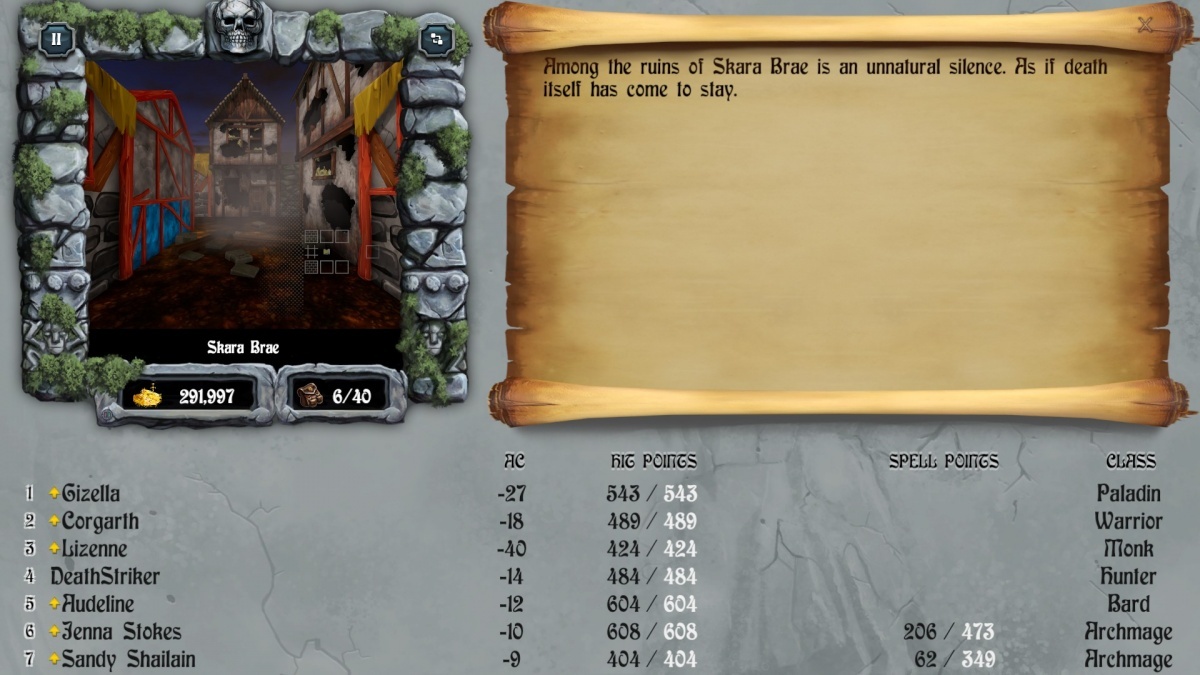
With the apparent death of Roscoe, mana is now much harder to come by. MP still replenishes in the sun, or with the help of a Mage Staff, but you're going to need to play conservatively in order to finish dungeons. In other words, spamming Mangar's Mallet every round is no longer a viable strategy. Sometimes found among the spoils of battle are harmonic gems. These handy rocks restore all MP to the user, so be sure to hold onto them.
All told, there's not much of a purpose in fighting on the enemy's terms. Challenging every monster that gets in the party's way might be valorous, but it's also stupid. Encounters frequently include mages and other foes capable of AOE attacks. Since they're far more effective than in the previous game, even high-level parties can get chewed up fairly quickly. It's usually a better idea to do "farming" runs and focus on weak enemies that summon their equally weak friends. Early on, familiars are a cheap source of experience, and they multiply like rabbits. When players aren't farming, they should stick to running away. Yes, just run away from every battle, because it's still the most viable strategy of them all. Bards can also sing the tune of Sir Robin, which makes avoiding battle even easier.
Though early impressions might suggest otherwise, the key to winning fights is to fling spells, constantly. The newly-added Chronomancer class is a testament to this. While the class lacks the Archmage's deep spell-book, they're more than capable of holding their own, thanks to Fatal Fist. Really, it's a quite simple incantation. Cast it and a mighty fist crushes everything in sight. Later on, all casters can learn how to summon NUKES, and that's just plain overkill. Of course, there are exceptions, the most notable of them being end-game bosses. Their defences are too strong to be cracked by any spell, so consider recruiting a rogue. This entry makes a point of handing out tons of amazing gear that's only usable by rogues. In pitched battles, their ability to hide in the shadows and sneak up on faraway adversaries can make a difference.
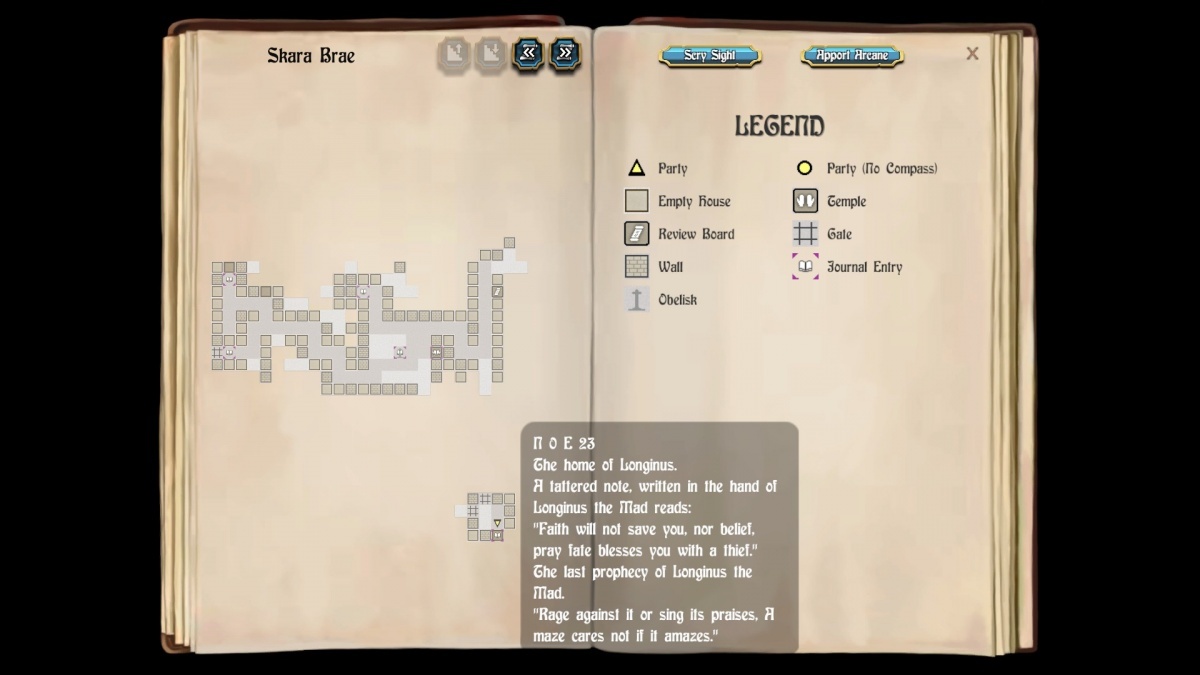
As far as dungeon-design goes, this is a massive improvement over the previous entry. There are far more labyrinths to explore, but they're not nearly as longwinded. Solving them is a matter of having the right key-item, rather than a tolerance for nonsensical and exhausting riddles. Furthermore, the addition of the Geomancer class makes navigation a relative breeze. They can remove walls, create maps, and essentially bend the earth itself to their will. The locales are also far more diverse than before. Ever wanted to explore a castle of ice? A fortress ruled by robots? Berlin? All these locales and more have to be conquered in order to face Tarjan. Thankfully, the pacing remains consistently great throughout.
All in all, The Bard's Tale III: The Thief of Fate is a satisfying conclusion to the original trilogy. The average encounter tends to be a little one-dimensional, but that's to be expected. After all, if you have access to incredibly powerful spells, then you might as well use them, because your enemies won't show any quarter. This is especially true for the final battles, which are quite impressive. They capture that desperate struggle against an overwhelming evil, where everyone has to do their part to win. The dungeons are also really good. There's always a real sense of progression. Even with only an hour of play, it's possible to complete a few quests, and not just wander aimlessly through labyrinths that are far too large for their own good.
The Collection
Let's cut to the chase. Krome Studios has done a fantastic job porting these classics to modern PCs. Not only are the games faithfully recreated, but the developer has also saw fit to include numerous features. Without a doubt, the most useful addition is the auto-map. This tracks every step the party makes, as well as anything notable, such as traps or clues. At any time outside of battle, the "J" key can be pressed to bring up the full map. Players aren't required to take notes either, because discovered hints can be re-read, by hovering the cursor over the respective map icon. Also convenient is that the Apport Arcane and Scry Sight spells can be used via the map. This is less finicky than typing in coordinates.
Much like the original PC games, this remaster allows players to carry over their stats and equipment across the entire trilogy. If they don't want to make things too easy on themselves, they can opt to give up their experience levels, or even start completely fresh. Unlike the originals, riddles tend to stay solved, even when the parties return to them. For example, back when The Bard's Tale first came out, players had to repeat Tarjan's name, whenever they wanted to enter the catacombs. Now they only have to say it once. Also, certain late-game puzzles no longer need to be repeated, which is greatly appreciated.
As some older gamers might remember, starting off can be a trial and a half. It'll take quite a while to build a party that survives more than two battles at a time. This edition is a little bit more lenient. Gold is easier to come by, and healing wounds seems to be cheaper. Progress can also be saved at any point. Unless you're attempting an "Iron man" play-through, then you'll be able to recover from any disaster that befalls the party.
Now if all these quality-of-life changes seem too generous, then feel free to check out the "Legacy" mode. This ensures an experience akin to what gamers dealt with decades ago. Eight options can be toggled on or off. Some, like the ability to use any unequipped item in battle, are actually beneficial. For example, a Bard can freely use any instrument in their inventory, giving them greater utility during battle. Other options, such as disabling the auto-map, are guaranteed to make the adventure far more challenging. Feel free to stock up on graph paper (and Tylenol) if you decide to go this route.
More important than anything else, this remaster doesn't introduce any issues that would make it inferior to the original. There are loading times, but only when loading a save. Even then, they're not significant. Maybe they get a little annoying early on, especially if you're the type of person who retries their level-ups, in the hopes of better hit-point gains. Otherwise, they aren't a problem at all. The artwork and animations are nicely done. Admittedly, this critic has a fondness for the black and white graphics in The Bard's Tale. They conveyed an atmosphere that wasn't quite matched by the sequels, but that's probably just nostalgia talking.
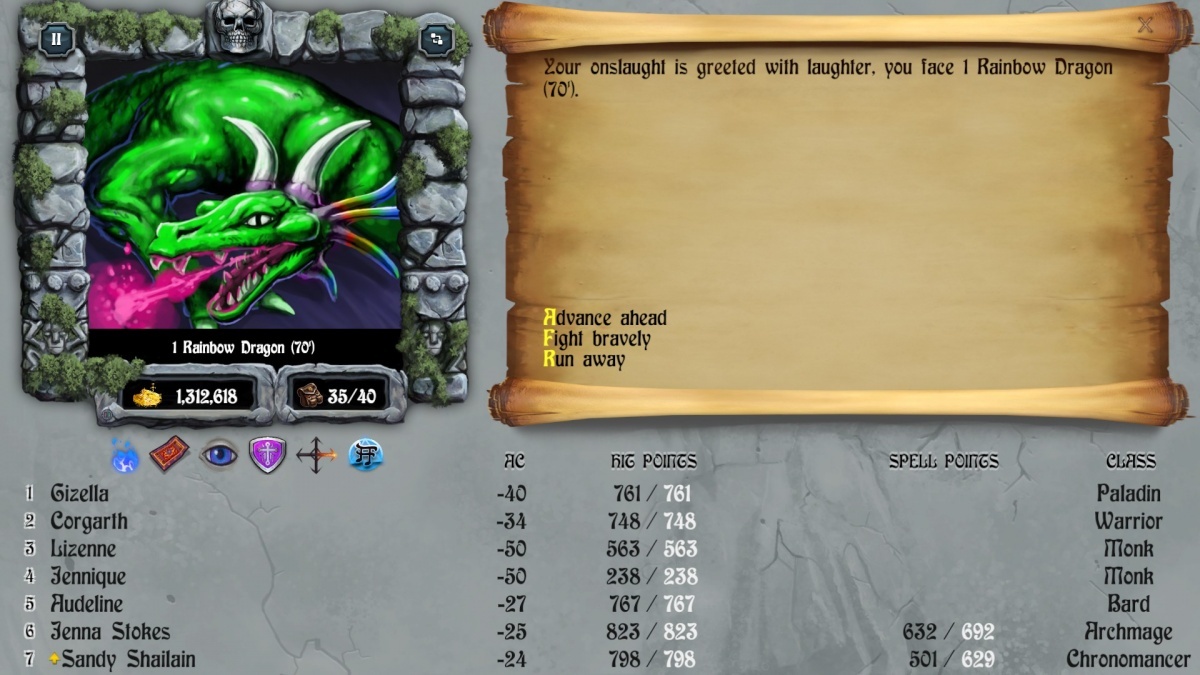
Cubed3 Rating
Great - Silver Award

For anyone out there that wishes to check out a few classic dungeon-crawlers, The Bard's Tale Trilogy is the definitive experience. The three games, warts and all, have been effortlessly reproduced. Accessibility is the least of anyone's concern here, thanks to a slew of convenient features. An auto-map that also tracks hints is a godsend. Of course, the option to ignore all of these niceties is freely available. Whatever the case, this is a fine epic that guarantees many hours of enjoyment.

![]() 8/10
8/10
![]() 0
(0 Votes)
0
(0 Votes)
 Out now
Out now  Out now
Out now  Out now
Out now  Out now
Out now Comments
Comments are currently disabled

 Sign In
Sign In Game Details
Game Details Subscribe to this topic
Subscribe to this topic Features
Features





 Top
Top

